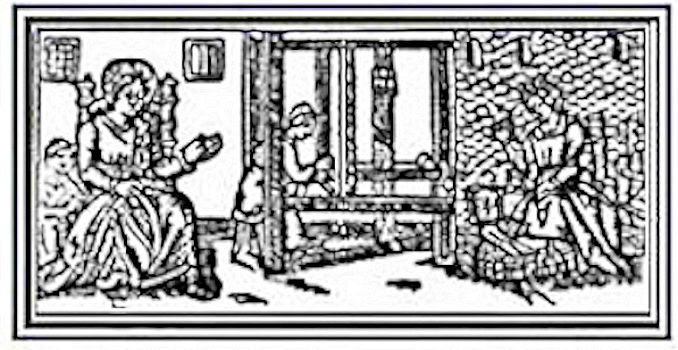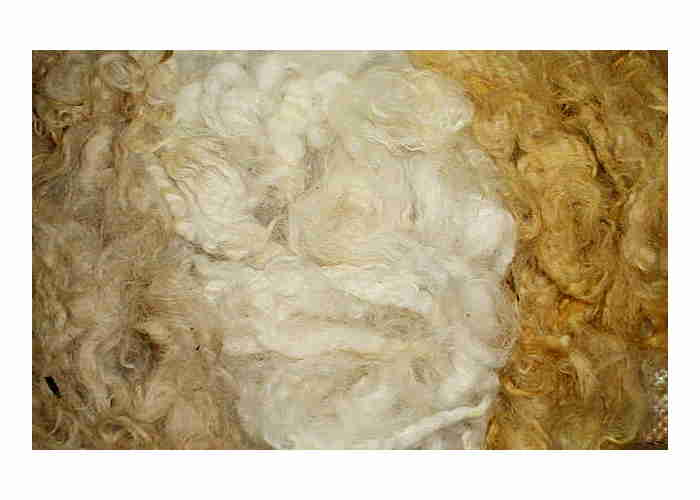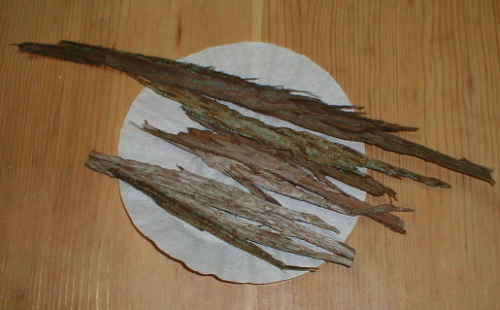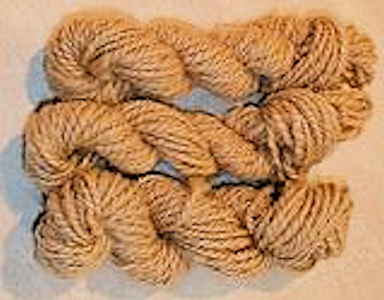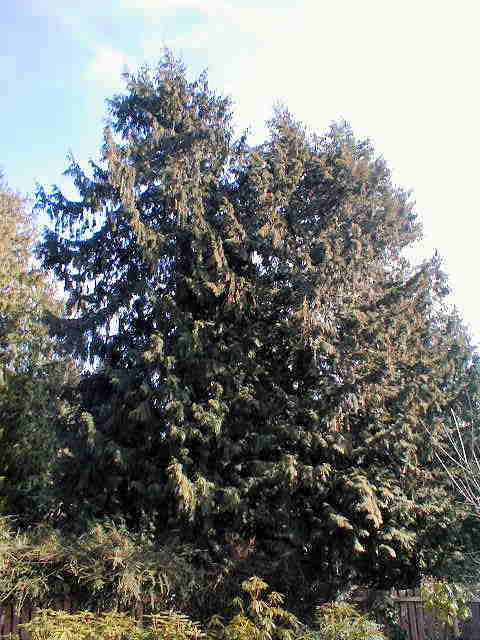The Western Red Cedar – Thuja plicata, is British Columbia’s provincial tree. It grows to heights of over 50 metres tall. The bark is grey to reddish brown and has an aromatic wood, with glossy yellow/green leaves.
Most tree barks will produce some type of dye, due to the tannins that are in the bark. To extract the dye does take some time as the bark needs to soak in water for a day or two, prior to dyeing.
I am fortunate to have several large red cedar trees on our property. I pulled a few strips of bark from each tree and chopped them into small pieces. I soaked the bark chips in water overnight. If you don’t have red cedars growing in your back yard, try obtaining some cedar bark mulch (that hasn’t been leached) from a gardening shop.
The following day I filled a dyepot with hot water and put the bark mixture into the dyepot. I let the dye mixture simmer for a few hours on low heat.
Then I put clean fleece that had been processed in an Alum mordant, into the dyepot. I let the mixture simmer for about 2-3 hours, on low heat. The wool only had a hint of colour in it. So I then let it simmer for another few hours. It was a bit darker by then. I turned off the heat, and left the mixture to sit overnight in the dyepot.
Romney Dyed with Cedar Bark
The Western Red Cedar acts as an anchor for other trees and plants, securing them in the soil and providing shade and a wind break. They provide shelter for birds and smaller animals throughout the year, protecting them against rain and snow.
Local First Nations people called the Red Cedar the “Tree of Life” because it was used for making baskets and clothing, ropes, fish traps, canoes and other articles.
More About Natural Dye Plants
Osage Orange
Madder Root
Sandalwood
Logwood
Mushroom Dyes
Shop for Natural Dyes at Paivatar.com



Natural Dye Books
Wild Color, Revised and Updated Edition: The Complete Guide to Making and Using Natural Dyes
Botanical Colour at your Fingertips
The Modern Natural Dyer: A Comprehensive Guide to Dyeing Silk, Wool, Linen and Cotton at Home
A Weaver’s Garden: Growing Plants for Natural Dyes and Fibers
The Rainbow Beneath My Feet: A Mushroom Dyer’s Field Guide
Harvesting Color: How to Find Plants and Make Natural Dyes
A Heritage of Colour: Natural Dyes Past and Present by Jenny Dean (2014-06-10)
Wild Color, Revised and Updated Edition: The Complete Guide to Making and Using Natural Dyes
The Art and Craft of Natural Dyeing: Traditional Recipes for Modern Use
EBAY – NATURAL DYES
NATURAL DYES – US
NATURAL DYES – UK
 LONGTHREAD MEDIA VIDEO
LONGTHREAD MEDIA VIDEO
 LONGTHREAD MEDIA SUBSCRIPTIONS
HANDWOVEN MAGAZINE
PIECEWORK MAGAZINE
SPINOFF MAGAZINE
LEARN LONGTHREAD MEDIA
PAIVATAR HANDMADE
LONGTHREAD MEDIA SUBSCRIPTIONS
HANDWOVEN MAGAZINE
PIECEWORK MAGAZINE
SPINOFF MAGAZINE
LEARN LONGTHREAD MEDIA
PAIVATAR HANDMADE
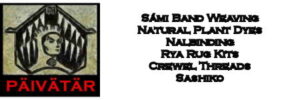 Paivatar on YouTube
Visit my YouTube channel for how-to craft videos.
Paivatar on YouTube
Visit my YouTube channel for how-to craft videos.
Or Please visit my Channel on Rumble for more how-to videos.
https://rumble.com/Paivatar
LIVE STREAMS - Paivatar Studio
KICK
TWITCH MAKERS&CRAFTING
YOUTUBE
Categories: NATURAL DYES
